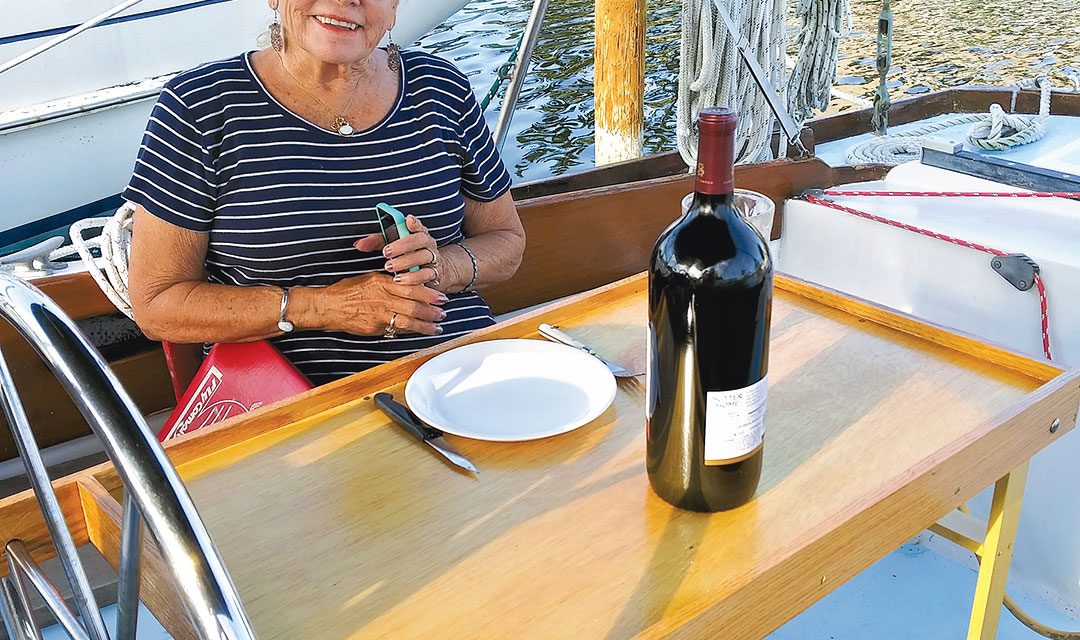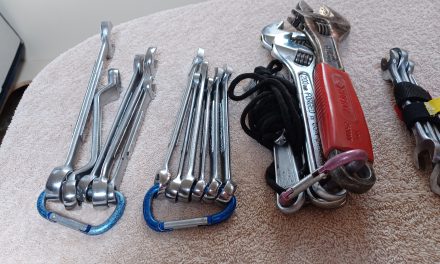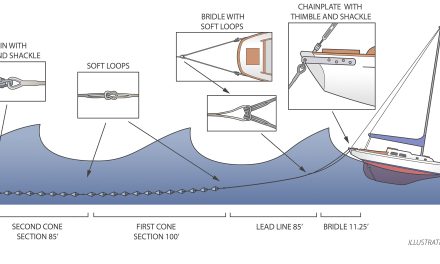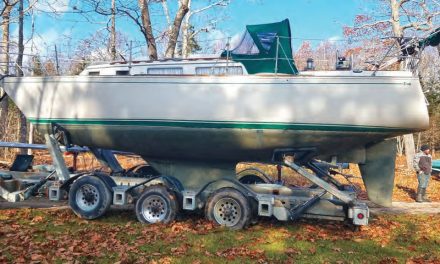With the ship’s wheel base, a clever design makes for finer dining.
Issue 134: Sept/Oct 2020
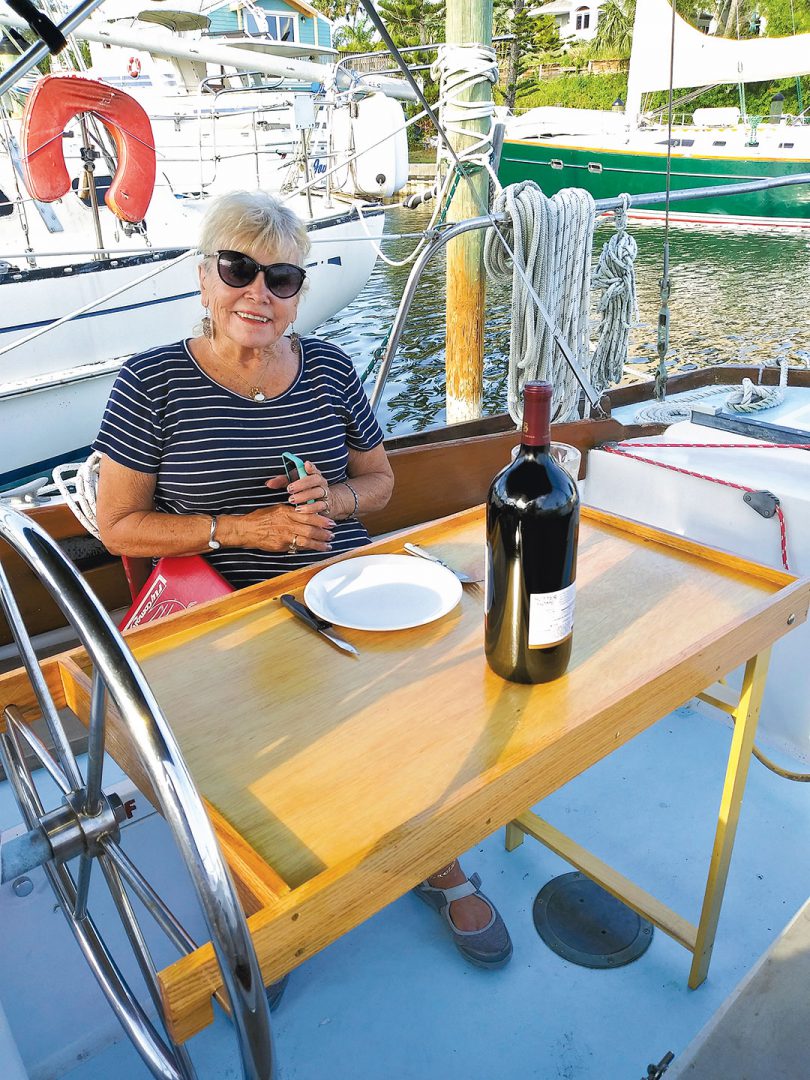
Vern’s wife, Sally, enjoys the convenience and beauty of the new cockpit table.
Our good old Bristol 35 has a cozy dinette in the main saloon, but the weather here in Florida often invites dining beneath the stars. Moving to the cockpit means leaving crew and guests to precariously balance plates on laps.
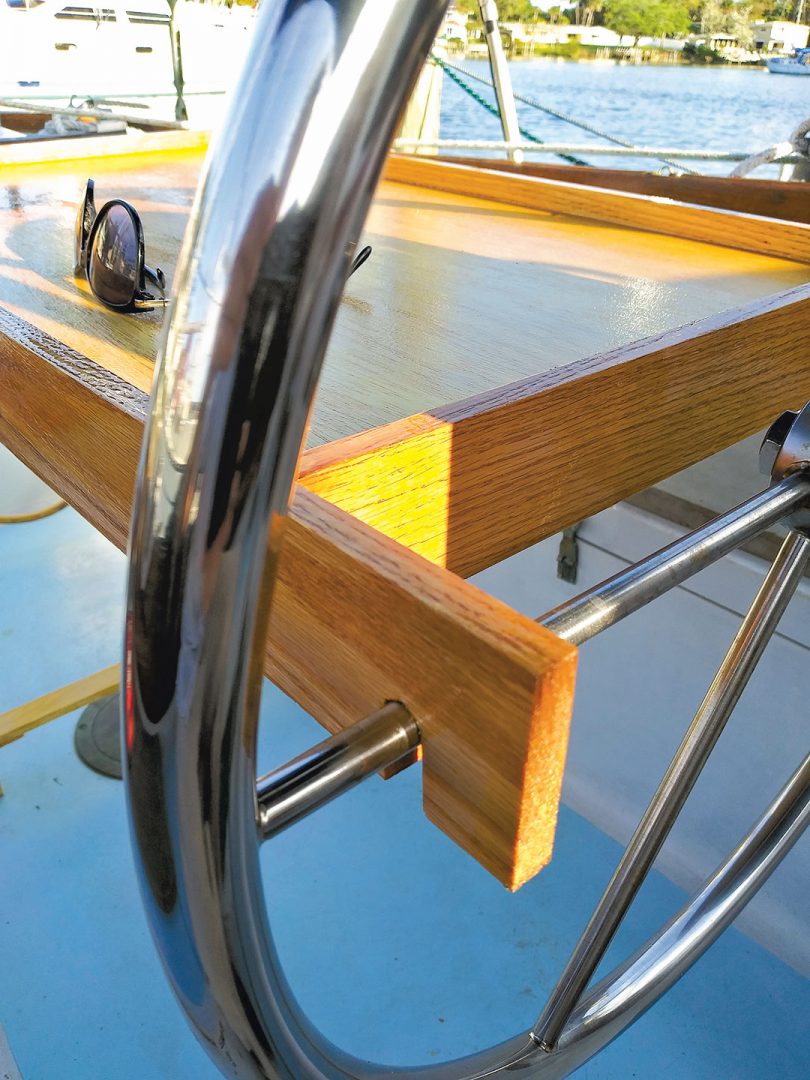
Notches cut into the outer frame slip easily over the spokes of the wheel, which is locked into place to keep the table level.
A cockpit table would solve that problem, but any table would have to fit into the space available, maximize that space, yet not overly restrict movement about the cockpit. It would have to be easily removed and stored when not in use. These considerations meant off-the-shelf products were off the table, leaving us to build our own. We set a spending limit of $100, then got to work designing the perfect cockpit table.
Because the imagined table would only be used when not underway, our Bristol’s wheel helm—positioned forward in the cockpit—stood out as a logical support for the forward end of the table. I imagined notches, cut into extensions of the outer framing, fitting over the spokes of the wheel after the wheel was locked with two spokes oriented horizontally. (This design could easily be reversed to use helms positioned at the aft end of the cockpit.) At the other end of the table, I envisioned support legs that could retract into the table’s frame for storage.
We made the inner framing, retracting support legs, and crossmembers using 1½ x ½-inch poplar strips, purchased in 36-inch lengths. The tabletop is ¼-inch birch plywood. For the outer frame we used 3 x ½-inch oak strips, also purchased in 36-inch lengths. We chose the lumber using durability, workability, affordability, and finished appearance as our criteria. Other hardwoods could be used, but softwoods should be avoided.
I completed all the joinery using 1-inch #6 brass wood screws and polyurethane glue. I used stainless steel carriage bolts (¼ x 2 inches) to attach the support legs and still allow them to pivot. These are backed with washers and wingnuts to allow easy tightening of the legs.

I finished the table using high-gloss polyurethane varnish. Construction, excluding finish sanding and varnishing, took about six hours. I used only common hand tools and basic woodworking skills. In the end, the total cost of materials was $58.
Our custom cockpit table passed its shakedown with flying colors. Installation and removal are as simple as I imagined, taking only minutes and requiring no tools. As it folds flat, there are numerous places to store it below. And, not only has the table made dining under the stars easy and comfortable, it’s also proved its worth for cockpit card games and general socializing over everyone’s favorite boat drink.
Vern Hobbs is a retired pilot and freelance writer who explores the islands, bays, and backwaters of coastal Florida aboard a Bristol 35 with his wife, Sally, and feline companions.
Thank you to Sailrite Enterprises, Inc., for providing free access to back issues of Good Old Boat through intellectual property rights. Sailrite.com

